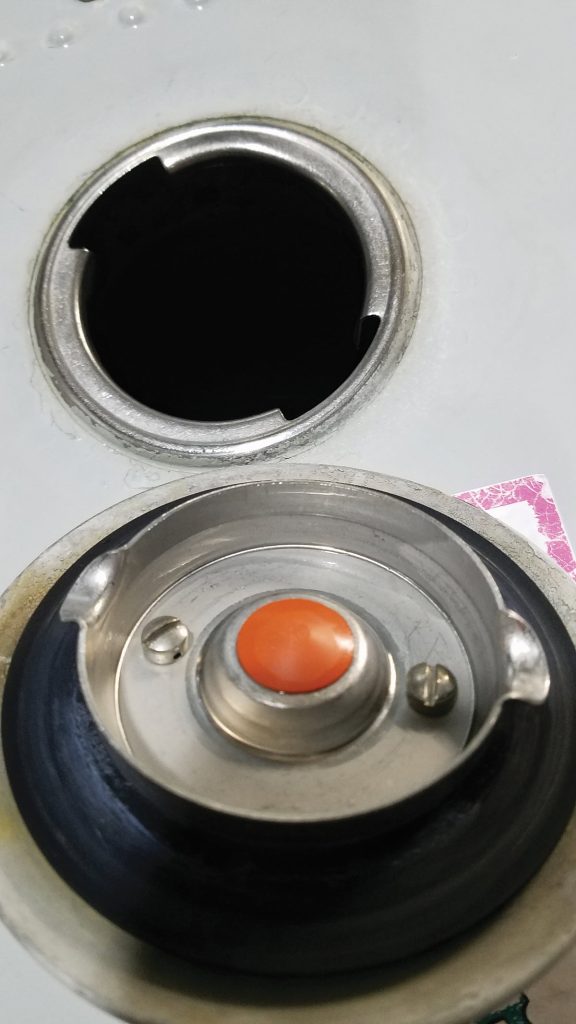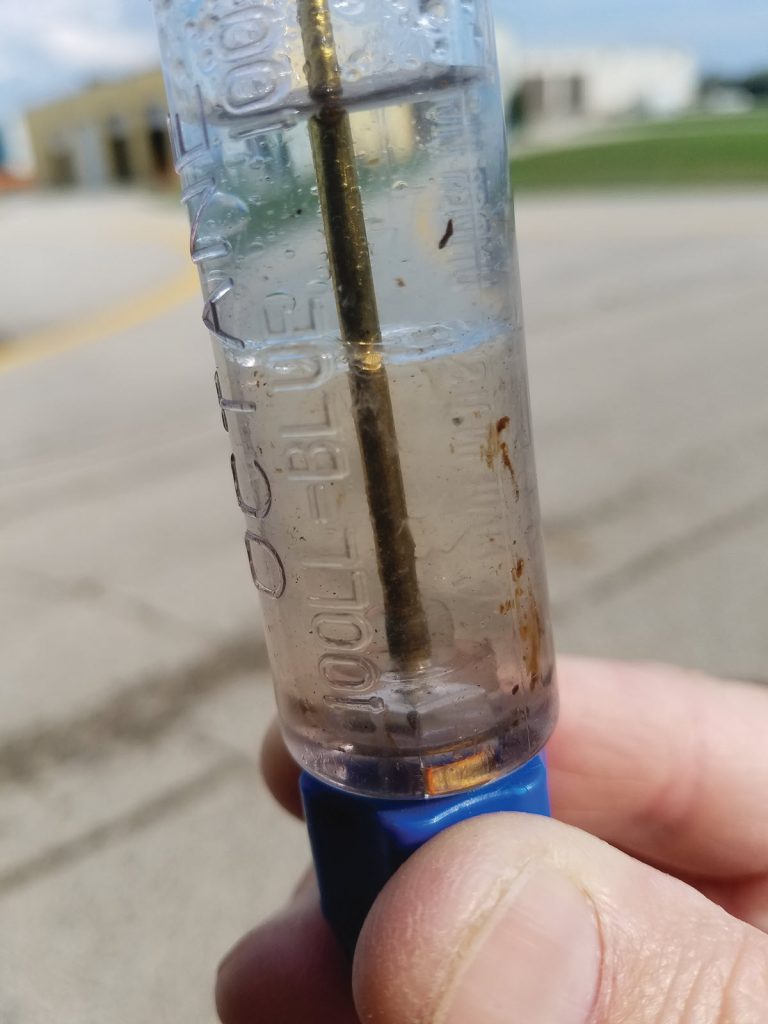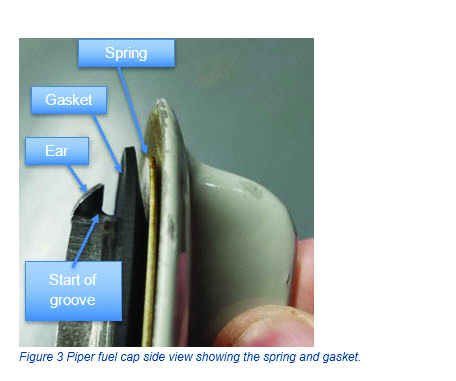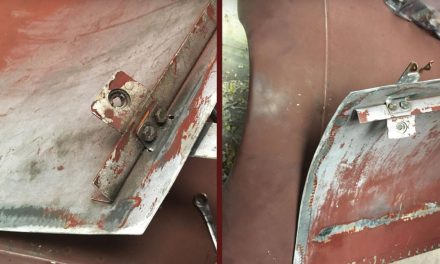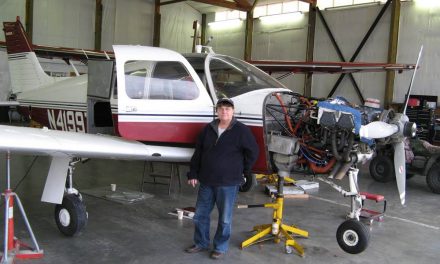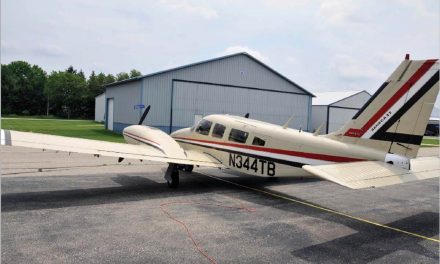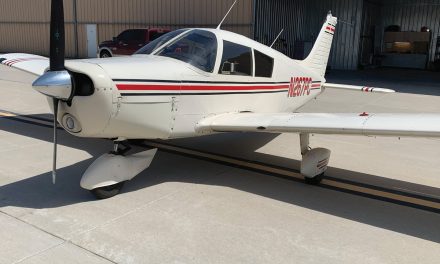By John Boos
A leaky fuel cap does not make for a fun flying companion. A worn-out fuel cap assembly has a compromised seal around the fuel inlet and could leak fuel in flight or allow water intrusion from a hefty rainstorm into the fuel tank. Fortunately, pressing down on the fuel caps when rotating them between the locked and open positions is an easy technique to avoid wearing out fuel caps and can extend the life of your fuel system.
A gasket under pressure normally forms a seal between the fuel cap and the filler neck which eliminates or minimizes water intrusion. Rainwater from heavy rain flows down the wing dihedral on the top surface of the wing toward the fuel cap. The gasket on a healthy fuel cap forms a good seal that diverts the rainwater to outside the fuel filler area, and all is well. But a poor gasket seal allows that same rainwater flowing down the wing to leak under the gasket, directly into the fuel filler neck, contaminating the fuel.
Some people have suggested using the business end of a plumber’s helper to cover the fuel caps when the plane sits outside as a solution. This is a less than elegant solution that forms another seal upstream from the fuel cap to divert the rainwater. It is not very visually appealing and does not address the root cause of the poor gasket seal.
How It All Works
The Piper fuel cap gasket is normally pressed firmly against the airplane with a circular spring. The compression force is developed between the “ears” on the fuel cap lock plate and the mating area in the fuel filler. When the fuel cap is replaced on the plane, the ears go in little slots in the filler, then a quarter turn pulls the lock plate down into the fuel filler. This force on the ears cinches the fuel cap against the airplane and compresses the spring on the fuel cap, which in turn presses the gasket against the filler neck to give a good seal.
The system works well, but the downward spring pressure onto the gasket results in an upward pressure to the lock plate ears. Each time the fuel cap is rotated in the fuel filler slot, this compression force between the fuel cap ears and the fuel filler neck causes wear on the ears. Over time, a groove develops on the lock plate ears at the point where the lock plate engages the filler neck.
Have a website login already? Log in and start reading now.
Never created a website login before? Find your Customer Number (it’s on your mailing label) and register here.
JOIN HERE
Still have questions? Contact us here.

